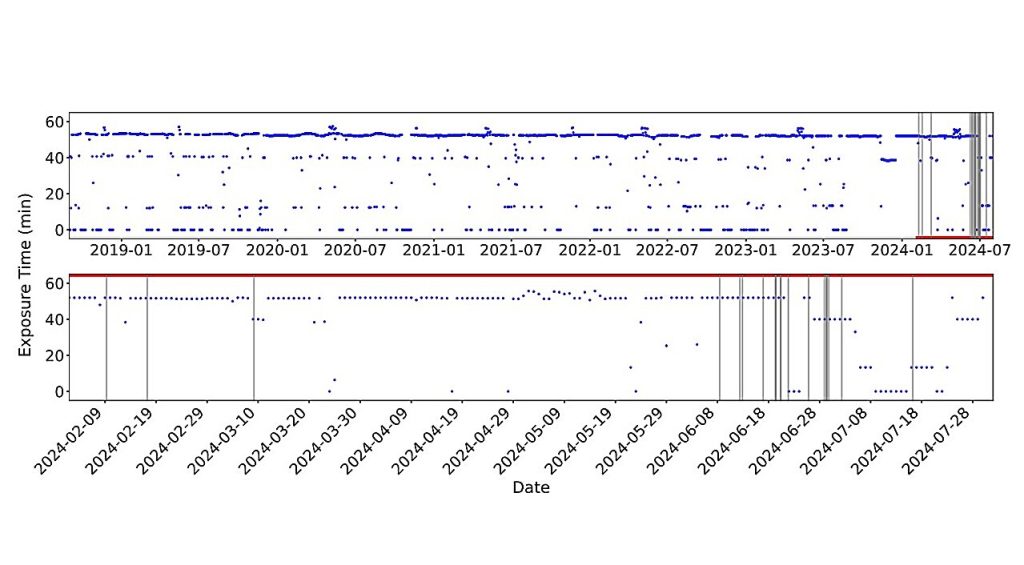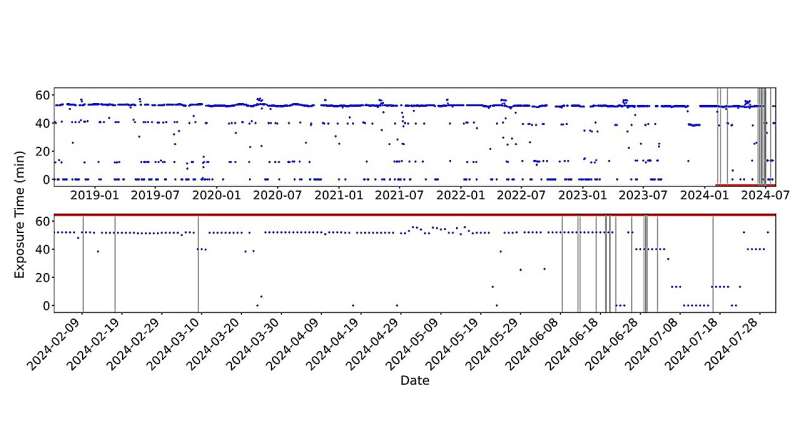
Astronomers discover a new repeating fast radio burst (Image Credit: Phys.org)

Using the CHIME telescope, an international team of astronomers has detected a new repeating fast radio burst (FRBs) source in the outskirts of a quiescent galaxy. The finding of a new FRB, which experienced 22 repeating bursts, was reported in a research paper published October 30 on the pre-print server arXiv.
FRBs are intense bursts of radio emission lasting milliseconds, showcasing the characteristic dispersion sweep of radio pulsars. The physical nature of these bursts is yet unknown, and astronomers consider a variety of explanations ranging from synchrotron maser emission from young magnetars in supernova remnants to cosmic string cusps.
The Canadian Hydrogen Intensity Mapping Experiment (CHIME) is an interferometric radio telescope at Dominion Radio Astrophysical Observatory in Kaledan, Canada. Built to discover pulsars and various radio transients, CHIME has detected the largest number of FRBs, both repeating and non-repeating.
Now, a group of astronomers led by Vishwangi Shah of McGill University in Montreal, Canada, reports the newest CHIME detection of a repeating FRB, which received the designation FRB 20240209A.
“The repeating FRB 20240209A was discovered by the Canadian Hydrogen Intensity Mapping Experiment Fast Radio Burst (CHIME/FRB) project in February 2024, with 22 repeat bursts detected up to July 31, 2024,” the researchers wrote in the paper.
The team found that most bursts from FRB 20240209A are narrowband, having a fractional bandwidth of 20–50% within the CHIME observing band. The peak burst rate was estimated to be below 20 per hour, above a fluence threshold of 0.9 Jy ms, which is almost 10,000 times more than its initial upper limit.
According to the authors of the paper, these findings indicate that FRB 20240209A undergoes sudden episodes of increased activity, which has been observed in other repeating FRBs. Moreover, the morphology of bursts of this source is consistent with other repeaters.
By analyzing the collected data, the researchers associated FRB 20240209A with a luminous and quiescent elliptical galaxy at a redshift of 0.138. This is the first association of a repeating FRB to a quiescent galaxy and the first association of any FRB to an elliptical galaxy.
Furthermore, the study found that FRB 20240209A has a projected physical offset of about 130,000 light years from the center of the host galaxy. This makes it the FRB with the largest host galaxy offset known to date.
In explaining this large offset, the paper’s authors consider several plausible hypotheses.
“We consider several explanations for the large offset, including a progenitor that was kicked from the host galaxy or in situ formation in a low-luminosity satellite galaxy of the putative host, but find the most plausible scenario to be a globular cluster origin,” the scientists concluded.
More information:
V. Shah et al, A repeating fast radio burst source in the outskirts of a quiescent galaxy, arXiv (2024). DOI: 10.48550/arxiv.2410.23374
Journal information:
arXiv
© 2024 Science X Network
Astronomers discover a new repeating fast radio burst (2024, November 7)
retrieved 8 November 2024
from https://phys.org/news/2024-11-astronomers-fast-radio.html
part may be reproduced without the written permission. The content is provided for information purposes only.






